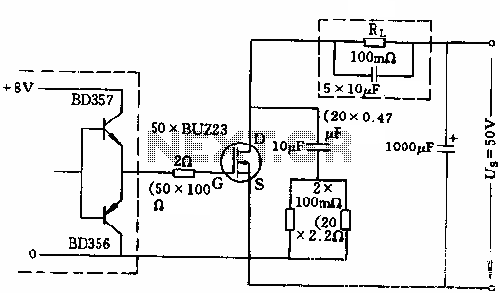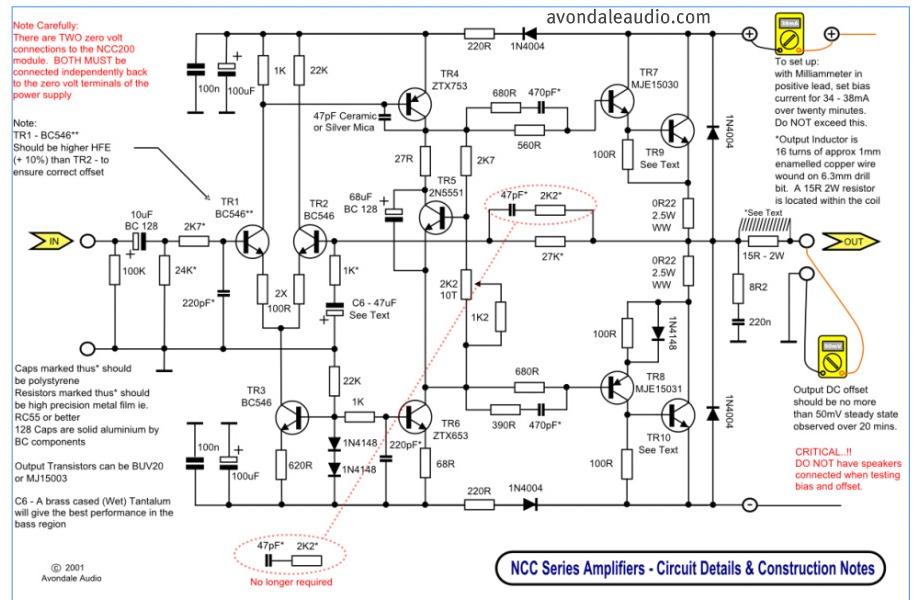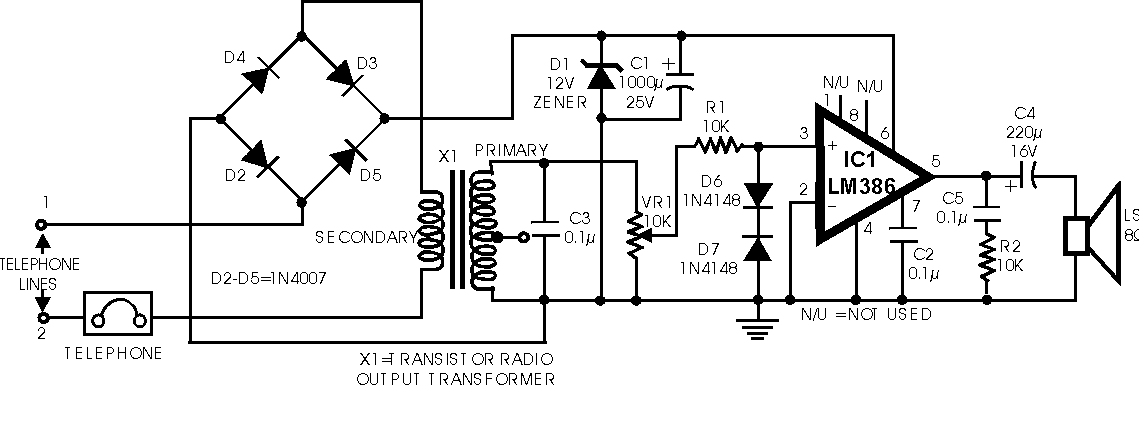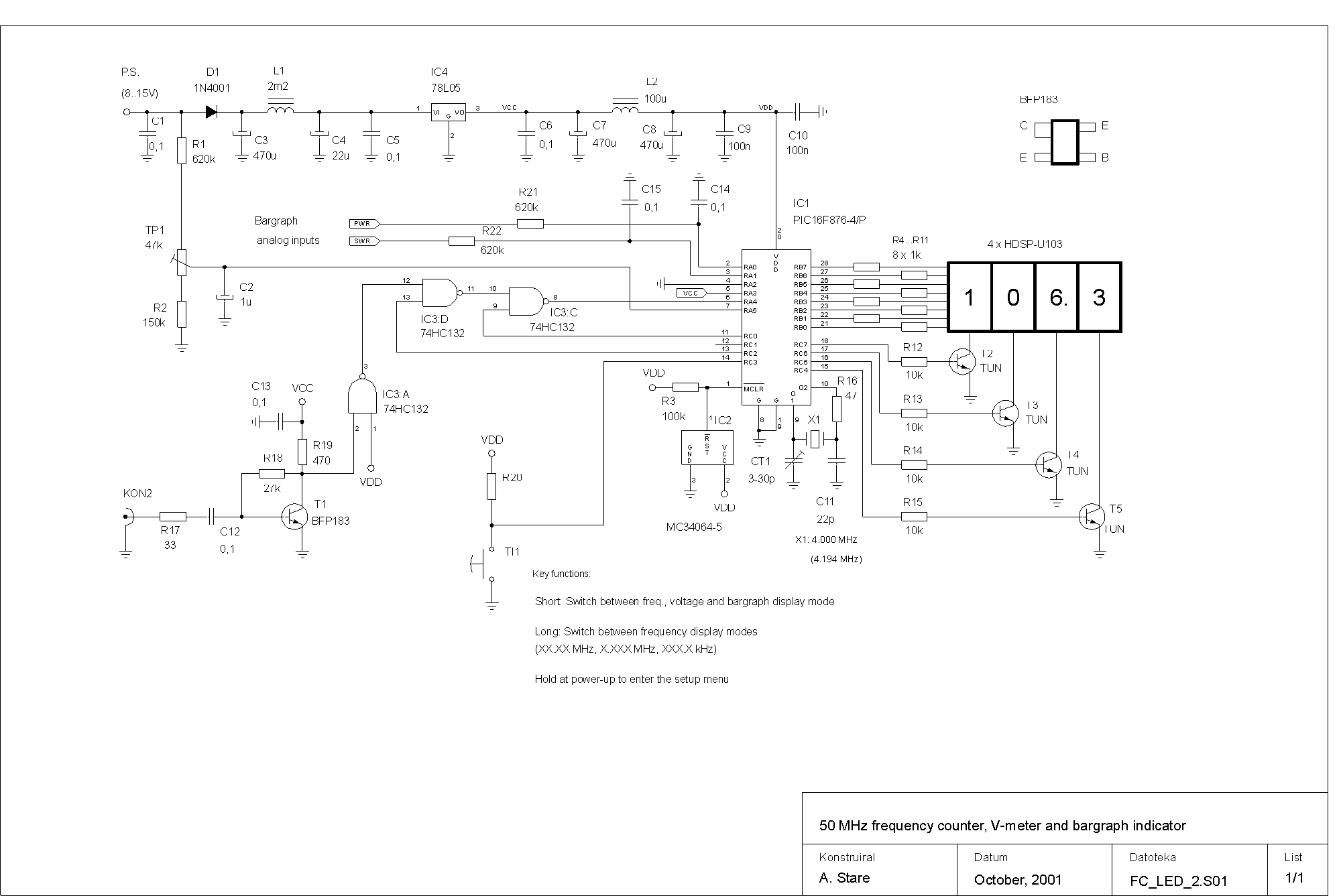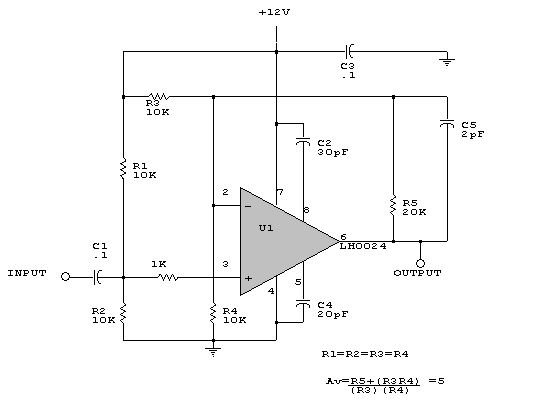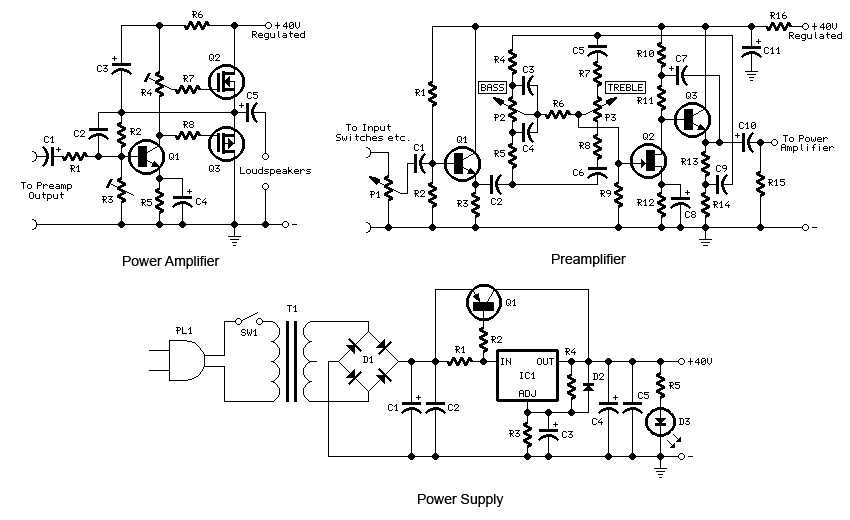
Amplifier Schematic Diagram
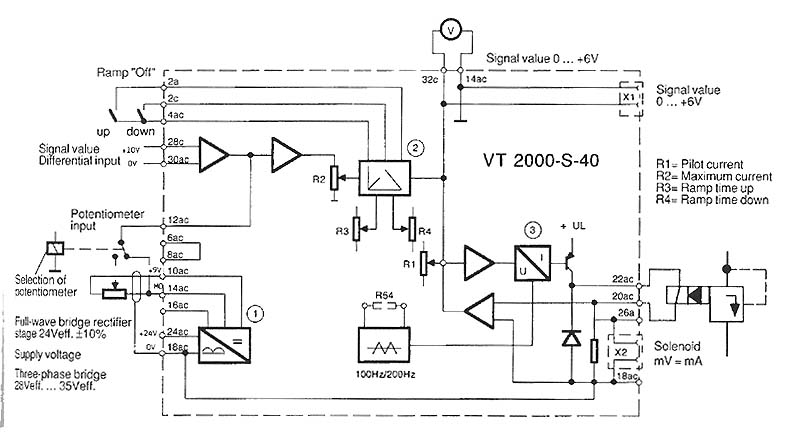
The function is to adjust the time constant associated with a capacitor, thereby influencing the ramp time. The components involved include a transistor, capacitor, and resistor.
The circuit described is designed to modify the time constant in an RC (resistor-capacitor) circuit, which directly affects the ramp time of the output voltage across the capacitor. The time constant, denoted as τ (tau), is calculated using the formula τ = R × C, where R is the resistance in ohms and C is the capacitance in farads. By adjusting either the resistance (R) or the capacitance (C), the time constant can be increased or decreased, resulting in a longer or shorter ramp time, respectively.
In this configuration, a transistor can be utilized to control the resistance dynamically. For instance, using a variable resistor (potentiometer) or a transistor in a feedback loop allows for real-time adjustments to the resistance value. The capacitor in the circuit serves to store charge and smooth out voltage changes, while the resistor determines how quickly the capacitor charges and discharges.
The implementation of this circuit can be particularly useful in applications such as timing circuits, signal processing, or any system requiring precise control over voltage ramping characteristics. Proper selection of component values is crucial to achieving the desired time constant and ensuring that the circuit operates within its intended parameters.Function: to increase or decrease the time constant with the capacitor, which increases or decreases the ramp time. Component: Transistor, Capacitor, Resistor, .. 🔗 External reference
The circuit described is designed to modify the time constant in an RC (resistor-capacitor) circuit, which directly affects the ramp time of the output voltage across the capacitor. The time constant, denoted as τ (tau), is calculated using the formula τ = R × C, where R is the resistance in ohms and C is the capacitance in farads. By adjusting either the resistance (R) or the capacitance (C), the time constant can be increased or decreased, resulting in a longer or shorter ramp time, respectively.
In this configuration, a transistor can be utilized to control the resistance dynamically. For instance, using a variable resistor (potentiometer) or a transistor in a feedback loop allows for real-time adjustments to the resistance value. The capacitor in the circuit serves to store charge and smooth out voltage changes, while the resistor determines how quickly the capacitor charges and discharges.
The implementation of this circuit can be particularly useful in applications such as timing circuits, signal processing, or any system requiring precise control over voltage ramping characteristics. Proper selection of component values is crucial to achieving the desired time constant and ensuring that the circuit operates within its intended parameters.Function: to increase or decrease the time constant with the capacitor, which increases or decreases the ramp time. Component: Transistor, Capacitor, Resistor, .. 🔗 External reference
